A Memorable Convention
By (late) Muhammad Muslim, editor Dawat
The following write-up by the late Muhammad Muslim, editor Dawat, was published in Dawat weekly, 4- 8th May 1980, in a regular column, ‘Kuch YadeN kuch BateN’ and has been reprinted in a collection of essays by Muslim Saheb with the same title by his son Athar Muslim. This essay may be beneficial to understand the background of the formation of Muslim Majlis-e-Mushawrat.
Last week we talked about a Muslim convention that was held in 1961. At this juncture, a group of Muslim intellectuals from Delhi wanted to participate in it. Still, when it got turned into a secular one, this group chalked out a programme to boycott it and create a hostile environment against it in the city. Some of them have said goodbye to this world, and some are still alive. One day I received an invitation from a gentleman of the group to join in a meeting held the same night at his place, and he insisted that I attend the meeting.
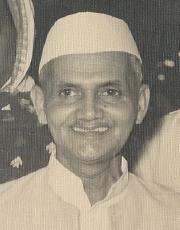
Arriving there, I saw about 20 – 25 well-known personalities who had already made up their minds and deemed it necessary to chart a programme of opposing and condemning any convention that was to be organised in the name of Muslims and [especially] if it proposed a future line of action for the Muslims.
When my turn came, I told them: ‘This line of thinking is not right. There might have been differences among us in the past, but this mindset must change now. instead, whether we attend it or not, our priority should only be the success of such a Convention. In addition, if anyone of us has any suggestion in his mind, he should send it to the convenor to discuss it.’
After some deliberations, they agreed that even if they were unable to cooperate in any way with the Convention, they would not, at least, oppose it. Before the Convention, we had proposed in the bi-weekly edition of Dawat some vital points under the heading ‘Ahlan Wasehlan’ so that the delegates could deliberate upon them. These points, however, could not be discussed in the Convention. Nevertheless, I remember that from the chair of the meeting to the audience, everyone believed that what was needed was a discussion on those points and not just staging a protest and leaving.
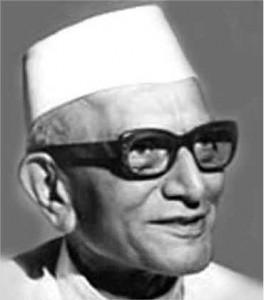
The Convention adopted some of the proposals as well. The chairperson believed that forming a committee was required to act upon these proposals. But his suggestion failed to be implemented. The Late Maulana Hifzur Rehman Saheb said that Jamiat Ulama-i-Hind was already there and is therefore enough to act upon these proposals.
A little while later, Maulana Hifzur Rahman Saheb fell ill, and I think he continued regretting it until his last breath that he could not get his decision implemented. May Allah SWT grant maghfirah to that embodiment of sincerity and bless him high place among the Illiyun.
The efforts to bring Muslims on one platform had been going on since 1948. After the Convention called by Maulana Azad a similar meeting was organised at Aligarh in 1950, followed by another one in 1961. But there came a time in 1964 when, as a result of the massive destruction of Muslims in the Adibasi belt of eastern India, every Muslim was shaken. From Ranchi and Chaibasa to Jamshedpur and around Raurkela in Orissa for a few days, it seemed as if Muslims were some game that everyone was hunting.
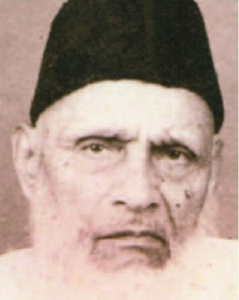
The doors of a factory in Jamshedpur were closed shut, and people with sharpened knives pounced upon the Muslim employees and butchered them. In the medical college of Ranchi, students attacked their classmates. Stories coming from villages were even more horrific. One and half months after these incidents, when the elders of the Muslim community toured these villages and saw pieces of dried flesh on walls and human skeletons lying around, no one among them could control his tears.
In 1964 when the need for a Muslim Convention was felt necessary, most active in this campaign were the late Dr Syed Mehmood, late Mulla Jan Muhammad, Maulana Abdul Hasan Ali Nadwi, Maulana Abul Lais, Mufti Atiqur Rahman, Maulana Manzoor Naumani, Haji Ismail and Suleman Seth. Maulana Asad Madani was pressurised to join it. Mr Yunus Saleem was not in Delhi at the time, but he was taking a keen interest in it.
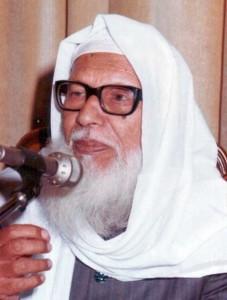
Thus some prominent figures and leaders of well-known organisations started to work to hold this Convention. Until this Convention materialised, for about two to three months, these people worked in such a manner that the distances between Calcutta, Lucknow and Delhi did not matter in any way. This was also the time when the group that had already usurped Jamiat Ulema-i-Hind had started conspiring against Mufti Atiqur Rehman, who was then the working president. Still, these incidents had not yet become public. On the other hand, at the general level all over the country, most people were not happy with this Convention. The responsibility to create a friendly atmosphere in its favour had fallen onto the shoulders of Dr Memmood. This was the time when Lal Bahadur Shahstri was Prime Minister and Gulzarilal Nanda was Home Minister and both of them did not want this Convention to take place.
The situation in 1964 was very different from 1980. In addition to terror, fear of anti-Muslim riots had also created an atmosphere of demoralisation. Muslims, particularly in eastern India, were losing hope while they looked extremely disturbed and demoralised in other regions. The Convention was decided to be held at Nadwatul Ulama in Lucknow, but it seemed likely that the Government would not allow it to take place.
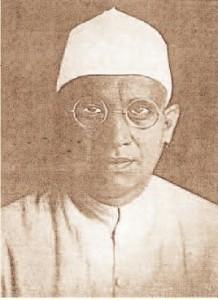
I remember Dr Mehmood met Lal Bahadur Shastari and requested him to pay attention to the problems of Muslims. Inadvertently Shastariji happened to say, ‘There is no consensus among Muslims on anything. Who on earth should we listen to and whose argument should we accept?’ Hearing this Dr Saheb said, ‘In that case you should therefore agree with the [idea of] Lucknow Convention’. He then requested Shastariji to send a message [to the Convention] along these lines.
After dealing with the Central Government, the next step was to deal with the state government and its bureaucracy. Late Dr Faridi volunteered to overcome this hurdle. In those days, Sucheta Kriplani was the Chief Minister of UP who had been a patient of Dr Saheb and felt obliged to him. Dr Saheb talked to her and explained about the Convention. Thus this hurdle was also removed. Later Dr Saheb used to say that many a time afterwards, Sucheta Kriplani told him that if she had known about the [proposal of] the formation of Muslim Majlis-e-Mushawrat she would not have allowed the Convention to take place.
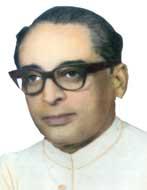
Nandaji, who was then Home Minister in the Centre, was although known to be a Sadhu, had a deeply Aryasamaji mind set and was fully prepared to make this Convention a failure.
The Convention was held at Nadwatul Ulema. Before the Convention organisers prepared a list of the guests according to which invitations were sent. I remember there was a big Muslim leader from Bhopal. Before independence, he had been trained by Maulana Azad and later became a Parliament Member. He travelled all the way to Lucknow and expressed the desire to participate in the Convention. When he came to Lucknow, the tenure of his membership of Parliament had ended, and the poor man also had already sacrificed whatever property he had for the community. Only Allah knows how he got the money to be able to come to Lucknow. However, as a collective decision had been taken that there would be no addition to the list of the participants, he was, reluctantly apologised.
There was a constant fear that if the Convention failed, that would increase the demoralisation of Muslims even more. However, preparations continued to be made with great care. It was also decided that an advisory committee consisting of the leaders of Muslim organisations be constructed that would tour the riot-affected areas; the committee would travel together so that Muslims got the message that they had not been left on their own and that all of their leaders had come to them to make the journey for future together. It was also proposed that this alliance would not be confined at the central level but, instead, would also be formed at state levels going down to district and tehseel levels. Asad Madani insisted on keeping it at the central level and further only to the state level, not further than this.
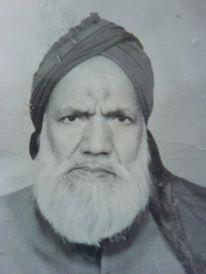
Some uninvited elements somehow managed to gate crash the Convention. Because of them, there was a constant fear lest some disaffected elements of one organisation leave the venue and make loud noises outside saying that the Convention had failed. One gentleman, Kazim Ali, from West Bengal, did perform this duty, though.
Hundreds of the students of Nadwatul Ulema were busy serving the guests of the Convention, while the majority of them were continuously praying for its success. Delegates from Jamshedpur, Ranchi, Raurkela and other riot affected places had also participated in the Convention. With tears in their eyes they narrated hair-raising stories of the helplessness of the community. However the repeated interruptions by some of the leaders presented constant risk of disruption. Perhaps it was in this situation that on one occasion, Maulana Ali Mian Nadwi, who, due to his eye problem, had been strictly advised not to make a speech, could not control himself. He stood up and virtually poured out his heart to the Convention. In addition, he warned, ‘None of you can leave this place until a consensus has been obtained and a united decision has been taken.’
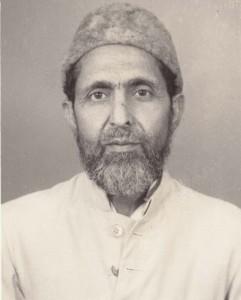
Such was the talking during the Lucknow Convention. In his presidential address, Dr Mehmood Saheb told the Muslims that they (the Muslim community) was not only sensitive to their woes but was also tortured by the worries of humanity as a whole. They are like a stream of pure and clear wherefrom everyone quenches its thirst and it is therefore, Muslims should understand their status.
In his appearance, Dr Saheb was a western educated man but his study of Islamic sciences and history was extensive. Allah SWT had blessed him with a soft heart, and he spent most of his time in the company of and benefitting from virtuous servants of His. From his appearance, no one could think he would be punctual in Tahajjud and Ishraq prayers. In his address, Dr Saheb said that Muslims were a simple lot who wanted the community to be united and if their leaders failed to unite and lead them, they would be answerable to the masses and Almighty both.
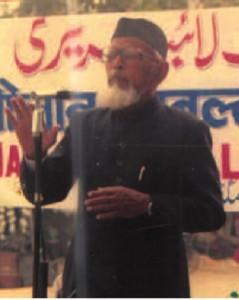
This Convention in Lucknow faced and went through severe tribulations but concluded successfully. It was decided that representatives of all Muslim organisations and prominent independent Muslims be taken on board to make collective efforts under Muslim Majlis-e-Mushawrat. The Convention adopted many proposals, the most important of which was that if the majority community of the country failed to give love and confidence to the country as a whole, then the burden to create such mutual love and amity falls onto Muslims themselves.
As part of the next phase of the Convention, Mulla Jan Muhammad sahib proposed that Muslim leaders toured the regions that had witnessed the most savage violence and in which Muslims had suffered most so that they could be consoled and encouraged. This proposal was agreed upon, and the tour got started from Ranchi. Those who were to be included in the team, besides Dr Syed Mehmood, were Mufti Atiqur Rahman, Maulana Asad Madani, Maulana Abul Lais, Maulana Abdul Hasan Ali Nadwi, Maulana Manzoor Naumani, Mulla Jan Muhammad, Muhammad Ismail, Suleman Seth and this humble self.
No sooner had the attendees had returned from Lucknow with a renewed sense of self-confidence than the news was published that a Democratic Convention was being planned and organised by Maulana Syed Asad Madani. Within perhaps 5 – 10 days, this Convention, at last, did take place. The then Finance Minister, Mr Morarji Desai, was its key speaker. In his speech, Mr Desai made severe attacks on the Lucknow Convention and called it a communal one. Mufti Atiqur Rahman Saheb was also present there. In his remarks afterwards, he said, ‘Mr Desai cannot see the communalism happening all over the country, but if some Muslims get together to share their grief, it hurts everyone.’
Morarji Desai is [when this essay was published in 1980, Mr Desai and Mufti sahib both were alive—UMM] an outspoken person. ‘I am not used to hearing such things.’ He said in a terse tone. Mufti Saheb is very courteous, but at that moment, he lost his cool. Enraged, he stood up and said, ‘Are you a king whose utterances cannot be challenged, no matter how wrong?’ Mr Desai also stood up in anger, but late Barrister Nuruddin intervened and mollified them. However, this exchange of words made it clear which way the Government’s mindset was going.
On 9 August, Muslim Majlis-e-Mushawrat was formed, and the tour started in October. Everyone except Maulana Asad Madani took part in it. A similar episode was witnessed in Ranchi, where the east-India-tour began. A scholar from a particular madrasa there who had had an association with Sheikhul Islam Maulana Hussain Ahmad Madani and had also taken bai’ah [oath of allegiance] with him, he along with his colleague teachers, kept away from the reception and the rest of the activities. In contrast, the rest of Ranchi seemed to have come out to welcome.
Dr Saheb, for this tour, had chalked out a programme, according to which he called on the offices of all local parties, be they Communists or Socialists or belonged to Janasangh or the Congress. He believed that those spreading the message of love should take their message to everyone.
In Ranchi, Maulana Anissuddin Ahmad Saheb, Abdul Mughni Saheb, Maulana Anisur Rahman Saheb and other prominent figures had formed a Reception Committee to receive these guests. On the other hand, the guests thought they would visit riot-hit and devastated areas, so they wondered if there would even be proper arrangements for their stay there. But as they reached Ranchi station, they were taken by utter amazement. From outside the station to the venue of their stay, people had formed row after row to welcome them. The whole of the city had been decorated with gates and arches. I saw Maulana Abul Lais Saheb, Maulana Ali Mian and Maulana Manzoor Naumani Saheb seated in a car had tears rolling from their eyes.
In the evening, a public meeting was organised in a vast open place in which, it seemed, that whole of the city had come to attend. Before the meeting, Dr Saheb had sent a message to the District Magistrate not to depute, at any cost, police to control the audience. The result was that in a city where Muslims were scared of passing through a Hindu-dominated neighbourhood, Hindus were apprehensive of passing through a Muslim-dominated area; they were now sitting, in the meeting, next to each other.
The Hindu attendees of these meetings invited the delegates, with insistence, to their areas and candidly confessed that humanity had stooped very low during the riots. These confessions and the love that was displayed was the first miracle that took place during this tour. And this was the change of hearts we had longed and aimed for so much.
Translated by Urdu Media Monitor from ‘Kuch YadeN kuch BateN’ compiled by Athar Muslim.
